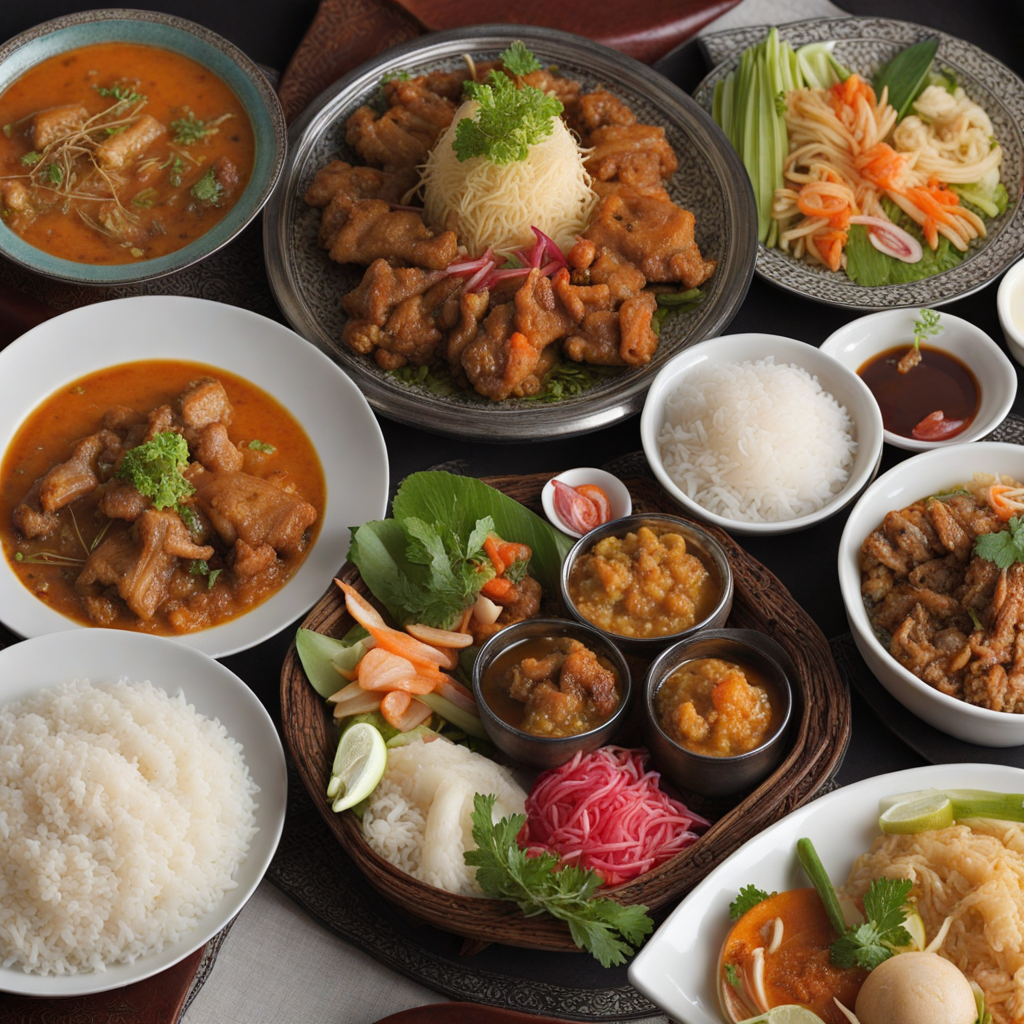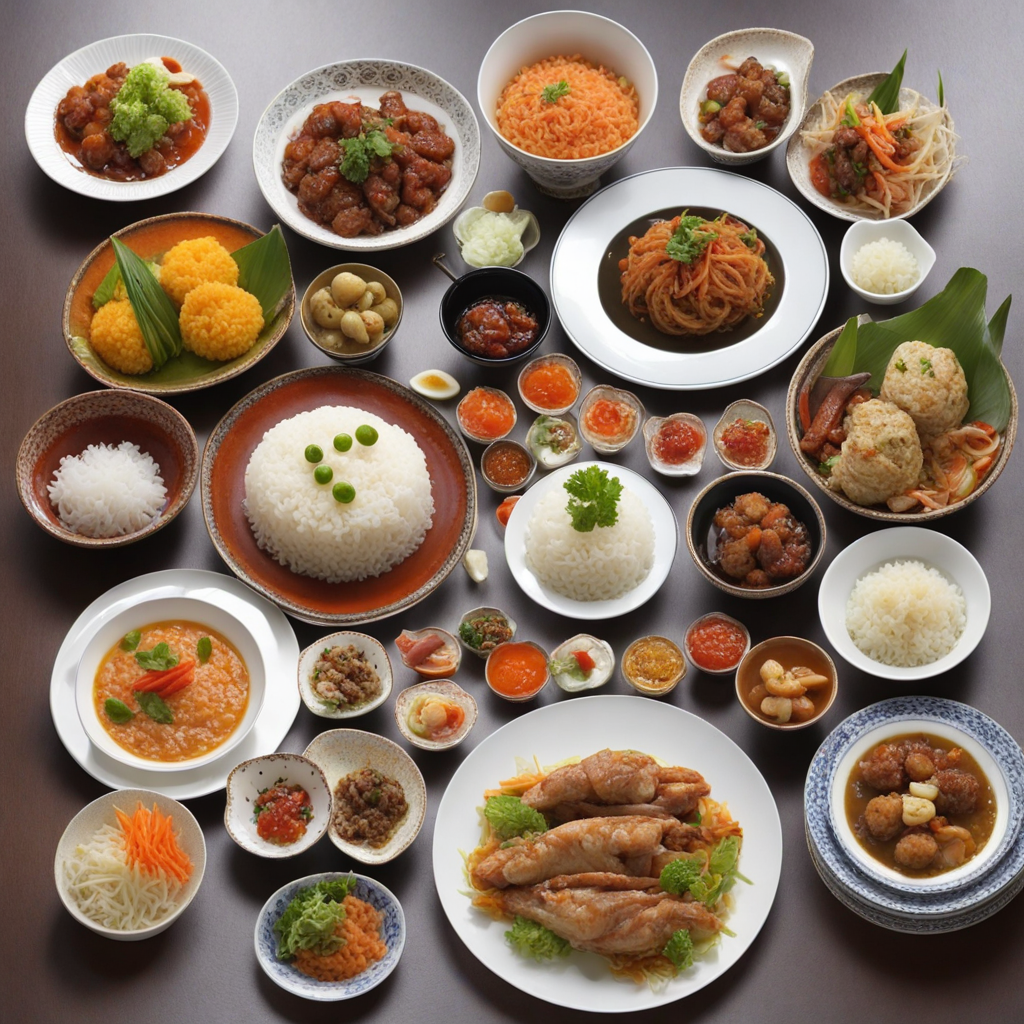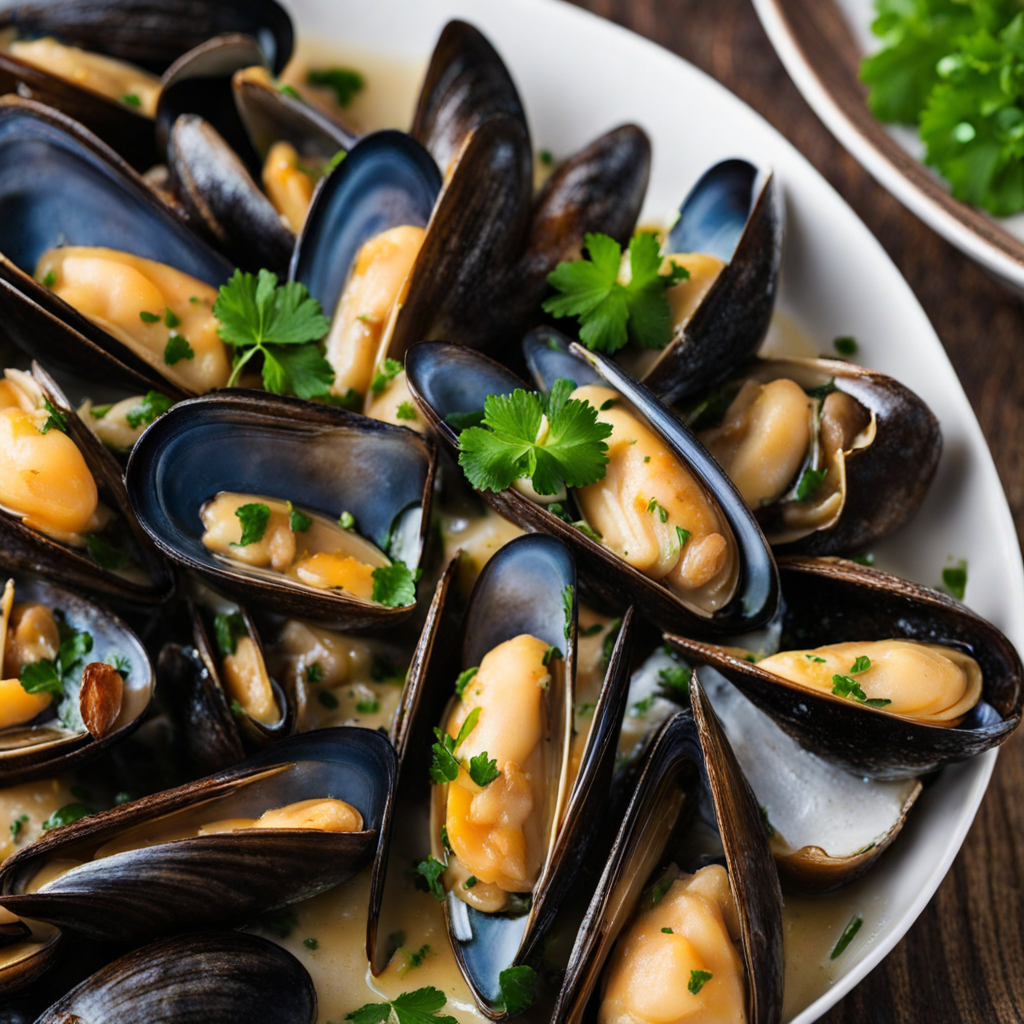Rijsttafel
Rijsttafel, meaning "rice table" in Dutch, is a vibrant and elaborate culinary experience that showcases the diverse flavors of Indonesian cuisine, which has been embraced and adapted by the Netherlands due to its colonial history. This feast typically features a central dish of steamed rice, accompanied by an array of small, richly flavored side dishes that range from savory to spicy. Each component is carefully crafted, offering a delightful balance of textures and tastes, making it a feast for both the eyes and the palate. The colorful spread often includes various curries, vegetable dishes, satays, and pickled condiments, each bringing its own unique character to the table. The beauty of rijsttafel lies in its communal dining experience, where guests are encouraged to share and sample a bit of everything. The meal can include classic dishes such as rendang (slow-cooked beef in coconut milk and spices), gado-gado (a salad of blanched vegetables with peanut sauce), and sambal (a spicy chili paste) that adds a fiery kick to the meal. Accompanying these dishes are often fried snacks like kroketten (croquettes) and emping (melinjo chips), providing a satisfying crunch that contrasts with the softer textures of the stews and salads. Each bite tells a story of Indonesian culture and flavors, inviting diners to explore and indulge. Rijsttafel is not just about the food; it's about the experience of enjoying a meal together, celebrating the rich culinary heritage that connects the two nations. The meal is often concluded with a sweet note, featuring desserts such as klepon (sweet rice cake balls filled with palm sugar) or pisang goreng (fried bananas), rounding out the feast with tantalizing sweetness. This vibrant and communal dining experience is perfect for those looking to discover new tastes and immerse themselves in a rich tapestry of flavors that reflect the history and culture of both Indonesia and the Netherlands.
How It Became This Dish
The History of Rijsttafel: A Culinary Journey from Indonesia to the Netherlands Rijsttafel, literally translating to "rice table," is a vibrant culinary tradition that showcases the rich tapestry of Indonesian cuisine, adapted and embraced by the Dutch. This elaborate dining experience consists of a multitude of side dishes served alongside rice, and it serves as a symbol of the historical ties between the Netherlands and Indonesia, reflecting colonial legacies, cultural exchange, and the evolution of gastronomy over time. #### Origins: The Colonial Connection The roots of rijsttafel can be traced back to the Dutch colonial period in Indonesia, which began in the early 17th century when the Dutch East India Company (VOC) established a foothold in the archipelago. The VOC sought to exploit the region’s rich spice trade, leading to significant colonial influence over the Indonesian islands. As the Dutch settled and interacted with local populations, they were introduced to a myriad of flavors, ingredients, and cooking techniques unique to Indonesian culture. Traditional Indonesian meals often feature rice as the central component, accompanied by an array of dishes that may include vegetables, meats, fish, and sambals (spicy sauces). The concept of serving rice with a variety of side dishes was already prevalent in Indonesian cuisine, but it wasn’t until the Dutch began to adapt these practices that rijsttafel as we know it today started to take shape. By the late 19th and early 20th centuries, the rijsttafel began to emerge as a culinary phenomenon in the Netherlands. It was particularly popular among the Dutch elite and expatriates returning from Indonesia. The experience of dining became a way to reconnect with colonial heritage, and rijsttafel was often served at formal gatherings and celebrations, symbolizing status and sophistication. #### Cultural Significance Rijsttafel is more than just a meal; it is an event that encapsulates the complexities of Dutch colonial history. It serves as a reminder of the colonial past, showcasing the fusion of cultures that took place during a time of significant political and economic power dynamics. The meal reflects the Dutch appreciation for Indonesian flavors while simultaneously acknowledging the complexities of their colonial legacy. As rijsttafel gained popularity, it evolved into a symbol of multiculturalism in the Netherlands. The post-colonial era saw a growing interest in Indonesian cuisine among the general populace, leading to an increasing number of Indonesian restaurants opening across Dutch cities. These establishments not only served rijsttafel but also introduced a broader range of Indonesian dishes, creating a culinary bridge between two cultures. Rijsttafel is often presented as a communal dining experience, inviting people to gather around a table laden with an array of dishes. This aspect of the meal encourages sharing, conversation, and connection, embodying the spirit of togetherness that is inherent in many culinary traditions worldwide. The colorful spread of dishes invites diners to explore different flavors and textures, making it not only a gastronomic journey but also a social one. #### Development Over Time As rijsttafel continued to evolve, it adapted to the tastes and preferences of Dutch diners. The traditional Indonesian rijsttafel is characterized by its plethora of small dishes, often numbering over a dozen, that may include: - Nasi Kuning: Yellow rice flavored with turmeric, often served as a centerpiece. - Sate: Skewered and grilled meat, typically served with a peanut sauce. - Gado-Gado: A salad of blanched vegetables, hard-boiled eggs, and peanut sauce. - Rendang: A slow-cooked beef dish with a rich and spicy coconut sauce. - Ayam Penyet: Fried chicken that is smashed and served with sambal. While the essence of rijsttafel remains intact, some adaptations have occurred. The incorporation of local ingredients and flavors has allowed rijsttafel to resonate with contemporary Dutch palates. The diversity of the dishes served can vary significantly between restaurants and households, with some opting for more traditional dishes, while others might include modern interpretations or fusion cuisine. In the late 20th and early 21st centuries, rijsttafel became increasingly popular among food enthusiasts and tourists seeking authentic culinary experiences. It has been positioned as a celebration of Indonesian culture, with various festivals and events showcasing the cuisine. The rise of social media also played a role in elevating the visibility of rijsttafel, allowing food lovers to share their experiences and encourage others to explore this unique dining tradition. #### Rijsttafel Today Today, rijsttafel remains a beloved culinary tradition in the Netherlands, often celebrated for its richness and diversity. Many restaurants dedicate themselves to this distinctive dining experience, offering carefully curated rijsttafel menus that highlight the best of Indonesian cuisine. The experience of enjoying rijsttafel typically involves a leisurely pace, allowing diners to savor each dish while engaging in conversation. As the world becomes increasingly interconnected, rijsttafel has also begun to transcend cultural boundaries, with international chefs experimenting with the concept and incorporating elements of rijsttafel into their own culinary practices. This evolution speaks to the adaptability of food traditions and their ability to foster cross-cultural dialogues. Moreover, rijsttafel serves as a reminder of the importance of understanding and acknowledging history in the culinary arts. It invites diners to reflect on the complex narratives of colonialism, migration, and cultural exchange that have shaped the food landscape in the modern world. #### Conclusion Rijsttafel is a captivating culinary tradition that encapsulates the intertwined histories of Indonesia and the Netherlands. It is a testament to the power of food as a medium for cultural exchange, celebration, and reflection. As diners continue to enjoy this multifaceted dining experience, rijsttafel remains a delicious reminder of how history can be tasted, shared, and celebrated around the table. In every bite, one can savor the echoes of a colonial past while embracing the rich, diverse flavors of Indonesian cuisine that have found a permanent home in Dutch culture.
You may like
Discover local flavors from Netherlands







